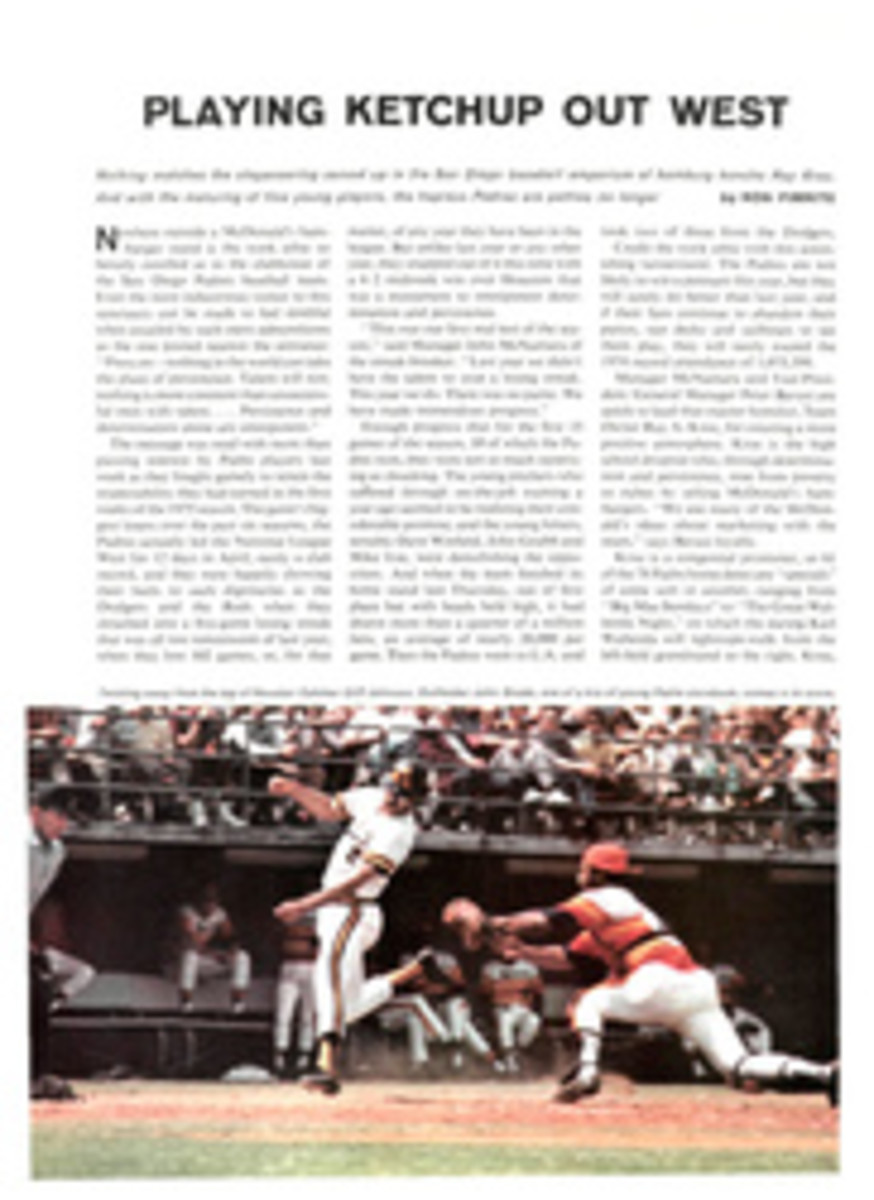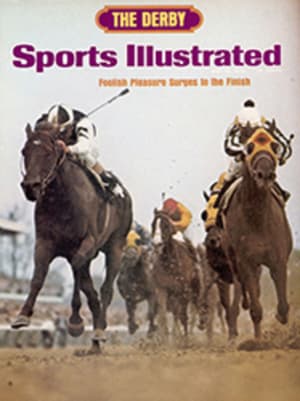
Showdown on the tundra
The day it happened I had decided to take a walk after work on the night shift. Work was on the north slope of the Brooks Range in Alaska. It was May 1974, and we had begun construction of the trans-Alaska pipeline. I had taken a job at Galbraith Lake, the northernmost camp in the mountains.
Directly to the south of us, the mountains looked like upside-down V's—steep, rugged and foreboding. To the east and west of camp, about three miles away, the mountains were not so fierce-looking; they were even rounded a little on top. To the north were the rolling hills that gently sloped down to the Arctic Ocean more than 100 miles away. I decided to walk north with my camera so I could get a picture of the camp with the rugged mountains south of us as a background.
It was four in the morning when I started walking. Already it was light enough for a good picture, the Arctic summer being upon us. To the east, the sun was hidden behind the mountains, illuminating the highest peaks to the south and to the west. That was the picture I wanted to get.
I had been walking for 15 minutes when I came across a shed caribou antler, three feet long, bleached white by the sun. It would make a perfect addition to the picture. I could lay it on a knoll and frame the camp inside the curved antler. It had six sharp tines on it, two of which were broken.
Carrying the antler, I walked for another hour toward the hill from which I had decided to take the picture.
Then I saw the wolf, a mere 50 yards away. He was coming into my path at an angle in that peculiar bouncing walk wolves and coyotes have.
I stopped.
The wolf walked—walked is the wrong word—or, rather, bounced on little coil springs set into his knees until he was directly in front of me. Then he turned and looked at me as though he had known all along I was there.
I had known there were wolves in the country; in fact, I had seen them around the camp at night, searching for an easy meal of garbage. (Partly for this reason, all camp garbage is burned in an incinerator. Wolves in camp can only mean trouble for both man and wolf.) The wolves I had seen in camp had seemed particularly bold, unlike the few I had observed in the wilds.
My first response was to look for other wolves. The tundra was treeless and rolling, well-gullied and knolled. This is why I had not seen him earlier; he had just come out of a depression.
There he stood, on those tremendously long legs, staring at me. The nearest tree was at least 100 miles away, but still I thought about it. We are not allowed to have guns in the construction camps. All I had to protect myself were the brittle caribou antler and a jackknife with a three-inch blade.
Wolves seldom, if ever, attack, I said to myself.
I knew this to be true, but there stood an animal 50 yards away, hackles raised, staring at me—an animal that could kill me. Did he know that?
I knew that I could not show fear. Animals can sense this. If he sensed my fear...well, I could be in trouble. Maybe I was anyway.
I can't say how long we looked at each other. Ten seconds, 30, a minute maybe. I thought. Hard. Fast. I really had only one response. There was no place to run. There was no place to hide. I was two miles from camp and the safety of the buildings and my companions. There was no decision to make. The only thing I could do was to go on the offensive and convince the wolf that I was not a creature to be fooled with.
I decided to take my chances with the caribou antler. It was heavy enough and stout, and the tines were six to eight inches long. If it came to a showdown, I would go for his ribs hoping that a tine would penetrate between them into the lungs. I would have my jackknife opened in my left hand. I remember smiling. It seemed like one of those trite man-vs.-wilderness movies filmed in a studio.
Then the wolf began to circle.
I forgot about the knife.
I began walking toward camp, directly in line with the wolf.
He stopped. I stopped.
Then I noticed the wind. I was downwind from him. Perhaps when he smelled me he would be scared away. After all, I was a man. Hadn't we ruled the earth for thousands and thousands of years? Yes, I thought, but not with a caribou antler. Even a primitive man would have been better armed. He would at least have had a spear. With a spear you could fight from a safe distance. I began to realize what a precarious position I was in. I had taken a lot for granted. Namely, my safety in a primitive setting. Obviously, this wolf had never been instilled with the fear of man. Any other wild animal, except perhaps for the grizzly bear—and even most of them—would have run at the sight of a man.
The wolf started circling again. I started walking.
He stopped. I stopped.
We studied each other. He was grayish-yellow and weighed about 80 pounds. Half my weight. And still he could kill me. What a frail, useless thing a man is, I thought, unable to hold his own against an animal half his size. And what a magnificent creature he was. Those long, powerful, agile legs perfectly evolved for the tundra. Running was the name of the game out here. I knew that wolves in a pack would chase a herd of caribou and then concentrate on the weakest animal, the one that fell behind. By now I was sure this was a lone wolf. Two miles away in the camp a helicopter revved its engines.
Then the movie camera started to grind again and the wolf began circling. I began walking again. Now I had a clear shot at camp...two miles away. There was no way I could outrun the wolf, but I felt a little better not having him directly between me and the camp. I knew it was a false tinge of security, but still it was comforting.
I forced my mind off the camp and back to the caribou antler, which was my real security. Go for the ribs. It's liable to break-if you hit him on the skull, I told myself. I kept looking at the tines. If only I had a couple of hours to sharpen them on a rock. Then I would have something. They were about as sharp as a table knife, except one that was noticeably sharper.
The wolf stopped. I stopped.
Then he sat down facing me.
I longed to know what was going on in his brain. Why had he sat down? What was he thinking? He surely wasn't afraid. Man was so new to this country. It was too far from the ocean for the Eskimos to bother with, and too far north for the Athabascan Indians. But hunters had been flying in to hunt Dall sheep for many years, and had shot wolves from airplanes using shotguns loaded with buckshot. The latter practice had been outlawed for only two years. Had the wolves forgotten already? Why wasn't he afraid?
I decided to make the next move. Toward camp. The wolf was sitting on my left, far off the line to camp, but still only 50 yards away. He had been circling carefully, getting neither closer nor farther away. Sitting on my left. Heck, it meant nothing.
I took a step and the wolf leaped to his feet as though stung by a bee. I stopped, frozen in midstep. He circled and I began walking again.
Wolves seldom, if ever, attack, I told myself.
But they're supposed to run, another voice said.
Then he stopped. I stopped.
He was facing me, and I could clearly see his raised hackles. I growled, not instinctively, but a well-thought-out growl. Again I contemplated the caribou antler. It was a little long for a quick swing, a little cumbersome for close-in hand-to-hand combat. No. Hand-to-teeth combat. Go for the ribs.
Then he moved. This time directly at me.
I moved toward him, growling, this time a little more instinctively.
We moved a dozen steps toward each other before he stopped.
I stopped.
Five seconds passed. I knew what I had to do. I had to make the next move.
I stepped toward him and he leaped six feet to one side as though stung again. Then he retreated those dozen steps he had taken earlier. Back to his 50-yard perimeter. He stopped and looked at me.
I stopped. My whole body swelled with relief. He had retreated. He had shown fear. Or at least the next best thing to fear—confusion. For the first time I realized that I was shaking. But it was over, wasn't it? He had retreated. He didn't want a fight. Once again I was glad that he was alone.
I turned away and began walking toward camp. He was off to the side circling again, wanting to get downwind for a smell. I speeded up.
Don't walk too fast, I shouted inside my brain. He might sense fear. So I stopped and faced the wolf again. He stopped.
We were now 75 yards apart, too far to see if his hackles were still raised. We stared at each other for at least a minute and I then turned and began walking again.
This time I did not stop. If he followed, I knew what I was going to do. I should have done it in the first place. I would stop and lash my jackknife to the end of the antler. I could use a bootlace. Perhaps I should stop and do it now, I thought. No, keep walking. The wolf was following my trail, sniffing my tracks and raising his nose to the wind. I went into a gully and now the wolf was out of sight.
Five minutes passed and I had not seen him. I walked rapidly, straight for camp. It seemed a lot closer now. Fifteen minutes passed. No wolf. For the first time I felt safe. No, elated. I found that I had developed a very warm feeling for my caribou antler. Without it, I might have acted differently. I might not have had the nerve to walk at the wolf with only a jackknife. I wondered what the wolf had in mind when he came at me. What would have happened if I had walked toward camp instead of at him? What would have happened if I had panicked and run? What would I have done without the antler? There was no way of knowing, because my whole defense had been dependent on the antler. Once again I had a warm feeling for it.
Soon I was standing on a knoll 300 yards from camp. I could smell bacon. The day shift had just gotten up and was going to breakfast. The sun had cleared the mountain to the east. It was a beautiful morning.
I stood on the knoll wondering what to do with the antler. I could take it with me on the airplane when I left, but it would cheapen the value of the antler to take it away. It had served me well. I would always have it anyway, in my mind.
I dropped it to the ground. Like a fake Hollywood chair, it broke in half.
ILLUSTRATION

